Q&A: Soy, Slingshots and Cyanide
What's a white hole? Why don't we use brain scans to diagnose mental health and why was cyanide Agatha Christie's poison of choice? All this and more as our panel of experts answer your questions. Joining Chris Smith this time are: Astronomy specialist Matt Bothwell, forensic toxicologist Lorna Nisbet, neuroscientist Camilla Nord and physiologist Sam Virtue...
In this episode

00:47 - Meet the Panel: From galaxies to calories
Meet the Panel: From galaxies to calories
Matt Bothwell, Camilla Nord and Sam Virtue, University of Cambridge, Lorna Nisbett, Anglia Ruskin University
We kick things off by seeing what astronomer Matt Bothwell, forensic toxicologist Lorna Nisbet, neuroscientist Camilla Nord, and physiologist Sam Virtue want to get off their chests and tell us about this week...
Matt - Over the last couple of weeks I've got very into 3D printing actually. So we have a 3D printer now in the department. I've been busy 3D printing these nice models of galaxies.
Chris - How on Earth do you 3D print a galaxy?
Matt - You take an image, right? And then you just convert the brightness of the image to the height of the 3D model. You end up with something that looks a bit like a relief map of a galaxy, basically.
Chris - You've given me here, it looks a bit like a bathroom tile, but it's got lumps and bumps on it. So what's this all about? It's effectively a flat galaxy? We say the Milky Way is a disc. This is a basically a bathroom tile with a galaxy printed on it in lumps and bumps.
Matt - It's a very nice way of communicating astronomical ideas to people with visual impairments. Astronomy is a very visual field, lots of pretty pictures and stuff like that. If you're not a sighted person, then you're cut off from all of that. And so being able to make 3D models of things is a really nice way of reaching people that might not otherwise be able to appreciate space.
Chris - So you've got astronomical braille here.
Matt - Exactly. It's very cool, isn't it?
Chris - So I suppose that this means for a blind person instead of actually trying to envisage what a solar system like ours - and then even bigger than that, a galaxy - looks like by running your fingers over it, you get some sense of scale and shape and structure.
Matt - Exactly. Yeah, if you never got to see a picture of these things and you just had someone describe it to you, you'd be missing a lot of the richness of what one really was. But yeah, being able to kind of feel it in a tactile way, you know, gives just as much information as seeing it really.
Chris - And what do blind people say about it if you'd show it to them?
Matt - I think generally it's very, very well appreciated. The University of Portsmouth has had a version of this called the tactile universe going on for a long time and yet it's very successful.
Chris - Matt, thanks very much for showing it to me. I had some inkling that people were going to do something like that, but I've not seen them and I can see why that'd be very effective. So thanks very much for introducing me. Sitting next to Matt is forensic toxicologist Lorna Nisbet. Hello Lorna. What are you going to tell us about?
Lorna - I work at Anglia Ruskin University and so we have been really kind of trying to look at cause of death and the increase in poisons that have been happening with regards to drugs. Sadly, last year was the highest year for deaths relating to drugs and overdoses. And so we are trying to look at reasons behind this and what we can try and do to help within the community.
Chris - You can tell us later on how you're going about detecting those. Thanks very much Lorna. Also here is Camilla Nord who's a neuroscientist, psychologist, you know how the brain works. Welcome! What would you like to talk to us about this week?
Camilla - Well, I suppose I've brought a myth and it isn't actually what I work on in my research, but what I work on is I'm a neuroscientist who's interested in psychiatric disorders. And one of the main themes that comes out when you're trying to understand brain differences that manifest in different mental health disorders, is that the group is not the same as the individual. And sometimes differences that look really important at the level of two groups, don't allow us to identify an individual in any way whatsoever. So the myth that I've brought runs along those lines entirely. It's the myth that there's a male brain and a female brain. Much like looking at different sorts of psychiatric disorders, if you collapse across every female brain in a very large sample for a specific region of the brain, and every male brain in a large sample for a specific region of the brain, there's a handful of regions that look systematically different between male and female brains. But the problem at the level of the individual, is that if you look at each of these regions and you say, "Oh, there's a male size and a female size", almost every brain shows more of a mosaic of male versions and female versions of these different bits of the brain. So in fact, there is no true male brain or female brain.
Chris - Also, is it not reasonable to say, "well look, there's probably 100 billion nerve cells in the brain and they're all interconnected with each other. And some of these areas might be a different shape or size in a person who's male compared to a person who's female. But at the same time, all these other regions of the brain might be different in a different way. So the degrees of freedom, the number of variations, is enormous. So although it might be smaller in one particular area on average in say women in that bit of the brain, there might be another region of the brain that actually is bigger to compensate or is doing something else and vice versa. So it's a very different problem, isn't it? It's not a simple thing to say, it's this structure in men, it's this structure in women?
Camilla - Yes. That's a very good point about the difference between structure and function, which I think you're getting at there. But even just in structure, I think the, the argument is quite compelling that most brains are a sort of mix of male bits and female bits.
Chris - And you can tell us more about how the brain works later in the program. Thanks very much. That's Camilla Nord. And also here is physiologist Sam Virtue, and you're going to lay down the gauntlet before us Sam!
Sam - So yeah, so I was thinking about this as January came round, because over Christmas we all eat, well most of us eat a lot more food than we should and we put on weight and I think we all can think about putting on weight as putting on fat. And then in January we kick in with our New Year's resolutions and we start to try and lose weight. I was thinking about this, I wonder if people here can tell me where they think the weight that they're losing goes?
Chris - What you mean as in when you, when you become less heavy on the scales, where has the weight that that has gone off your hips, gone to?
Sam - Exactly. Where does it go to?
Chris - Anyone like to speculate?
Lorna - I'm going to do a QI buzzer moment I imagine here, but surely it's your body using all of your fat and you're using it as energy and you're burning it off in terms of movement and reduced calorie intake.
Sam - So the reduce in calorie intake will make you lose weight, but to lose the weight, the physical fat, if you lose a kilo of fat, it's got to go somewhere.
Matt - I think I remember hearing this somewhere. You breathe it out. Is that right?
Sam - So yeah, so basically fat is made of three things, carbon, hydrogen, oxygen. And so we can get rid of the hydrogen and oxygen in two ways. We turn it into water and we can lose the water in our urine, or we can also lose the water in our breath. However the carbon, we can only lose it from our bodies as carbon dioxide. So when you go on a diet, you lose all your weight by breathing out.
Chris - You literally breathe your weight into the atmosphere. Someone said to me once, "I don't really get this whole point about how can, how can you have a mass of carbon dioxide? When we're talking about emissions and they talk about tons of carbon dioxide, your carbon footprint is four to 12 tons. How can a gas weigh anything?" And you say, "well the fuel that you put in your car, for example, that tank of fuel weighed as much as one of your passengers and when the tank is empty, the car has lost mass. Where has the mass gone? Well it's gone out of the exhaust pipe. Therefore, that mass of carbon, which was in that fuel has turned into a mass of gas which has gone out of the exhaust pipe. It still weighs something. It's still atoms. It's just that when it's in the atmosphere it's floating on the rest of the atmosphere, so it doesn't appear to weigh anything but it certainly has mass". So it's an interesting question. Camilla?
Camilla - Does that mean your carbon footprint increases if you lose weight? And perhaps we should all have a couple more slices of cake in January?
Sam - I mean you are technically correct and I'm not going to go into any further details!

09:08 - Why doesn't the Moon get a cool name?
Why doesn't the Moon get a cool name?
We put this space question to astronomer Matt Bothwell...
Matt - I love this question so much. It's such a good question. You're absolutely right, the moon, we're so used to it as a name. It feels very boring, right? Compared to the lovely and evocative names from the rest of solar system. You mentioned Phobos and Deimos and yeah, some moons have Shakespearian names like Oberon, all these kinds of things. The answer really is that we've known about our own moon for a very, very long time. Almost to the point where it's hard to say that the moon was discovered, right? I mean all you have to do is look up and it's, it's there half the time. So we've, we've known about the moon through all of human history really. All the other moons in the solar system are very, very tiny and need telescopes to be able to see them. And telescopes didn't come on until a few hundred years ago. So the moon was named thousands and thousands of years ago. Our word moon actually comes from the name month because the moon takes one month to go on one orbit, one trip around the earth. So that's where the word moon comes from.
Chris - Because the lunar cycle when it goes full moon and then into a waning moon when it goes in three quarters, quarter, back to invisible again.
Matt - Right, exactly. And that was a way that they used to measure time. The reason the word measure and moon sound similar is because the original word that gave the root of moon is the same as the root of the word measure. Because it was the original measurement -
Chris - And menstruation as well, isn't it? Because they actually said that's the 28 day cycle, which is roughly the same. Just by chance, I understand. Nothing to do with the moon, but that was also a 28 day cycle. So people said, "well, it's something to do with the moon. Must be, right? It's the same length of time." And so it got the same name.
Matt - Other languages also have very nice and evocative names for the moon as well. So we say moon in English, but in Latin they say luna for example.
Sam - So Matt, you've reminded me of a question I've had about the moon for a long time. And I'm sorry if I put you on the spot here. Is it just coincidence that the same side of the moon always faces us or is there some funky physics at play?
Matt - The answer is very much funky physics. The reason the same side of the moon faces us all the time, it's not actually because the moon doesn't rotate, cause it does. It's that the moon's, how long it takes the moon to spin on its axis is exactly the same as how long it takes for the moon to go on one orbit around the earth. That's a process called tidal locking. So when you have two bodies that are quite close to each other in space, uh, the, the rotation periods and the orbital periods get synced up in this way.
Chris - One other question - Sam's got me thinking now - someone asked me the other day, "when we have an eclipse and you have a total eclipse, is it just fluke that the moon is just the right size to completely cover the sun the way that it does in our particular neck of the solar system?
Matt - So the answer to that one is just fluke. Yes. In fact, in the future, that won't be true. The moon is actually traveling away from the earth by about a centimeter per year. And so if you go to, maybe 500 million years or a billion years in the future, the moon will be too small, and actually we won't get eclipses anymore.

12:15 - How do we find poisons in the body?
How do we find poisons in the body?
We asked forensic toxicologist Lorna Nesbit how she goes about tracking down toxins...
Lorna - So we don't start off completely blind as forensic toxicologists. We'll get in some sort of paperwork from a pathologist that will indicate whether they want just a general toxicology screen or whether pills had been found at the scene or if the find any needle marks on them that may indicate any sort of opioid abuse, you know, like heroin users for example.
Chris - So that might give you, excuse the pun, a point, and that might point you towards something to look for.
Lorna - If we look at the amount of drugs that are now out there, we're now at the point where we're looking for a needle in a haystack. So any sort of information is really helpful for us. And so then what we will do is we will basically do, a kind of screen and we will run the blood sample or the urine sample through some of our instrumentation so it will tell us whether we might have some sort of opiate and it will lock at down into the class of drug that we're looking at.
Chris - Are there any clever crafty molecules that will escape that screen? So if I wanted to do the master plan, criminal mastermind sort of murder, I could give a drug and by the time someone like you got near the body it would've have gone. I'm not planning any of this anybody, I'm not trying to give people ideas. But is that possible?
Lorna - If you are going to try and plan the perfect murder, which you can't generally do anything, you will get caught at some point, it might just take slightly longer, try and get something that's going to be eliminated out of the body really quickly. And those drugs are typically actually used for really sinister crime. So drug facilitated sexual assault. A lot of the drugs are used for that, because by the time somebody wakes up, for example, the drugs gone out of their system. So something like GHB is really fast eliminating. Heroin is another one. So it'll start off as heroin and then within about five minutes your body will already have started to break that down. So you have to either know how long that drug is going to stay in the body and what the biomarkers that you're going to be looking for are.
Chris - Someone asked me the other day, sounds a bit macabre this, but they were saying cause carbon monoxide poisoning, the way that kills people is by asphyxia isn't it? For instance, if someone died in a hotel room that had a poor heating system and they breathed in the gas, it binds to your hemoglobin. So you can't get oxygen around your body cause there's hemoglobin blocked up with carbon monoxide rather than hemoglobin ready to receive oxygen. Do people go looking for the carbon monoxide under those circumstances? Or if you just happen to have, have access to a cylinder of carbon monoxide and you poison someone with it and there's no other reason why they might be exposed, would you get away with that or do they look for that?
Lorna - No, so carbon monoxide poisoning is actually relatively easy to spot from a toxicologist point of view. Everybody thinks that forensic science is really glam and glorious and we all run around and we solve crimes, and we go and we see lots of dead bodies and we actually don't, we just get the bits. So we get, you know, the urine samples and the blood samples come through. And when people die, funny things happen to their body. So most of the time the blood that comes through is kind of greenish, or it's really lumpy or there's large fat deposits in the top. It's, you know, it's really glam. But when somebody comes through and they've died of carbon monoxide poisoning, their blood's really cherry red. And so when you've got a really cherry red sample, that's the first thing that you're probably going to try and look for.
Chris - So someone like you would spot that?
Lorna - Yeah.
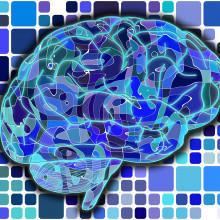
15:49 - Can brain scans diagnose mental disorders?
Can brain scans diagnose mental disorders?
We put this one to neuroscientist Camilla Nord...
Camilla - It's a very reasonable question and one from a research perspective that I'm very interested in, but from a clinical perspective, my answer's a bit like the male and female brain answer, which is that at a group level, there are several reproducible differences between brains with say, major depressive disorder and brains without. And this is on an anatomical level, but it's also on a level of kind of connectivity or function of different regions in the brain. So there are lots of different scales at which we can measure those group differences, but at the moment there aren't reliable differences that we could use to categorise a brain into one category or the other. And that's a sort of scientific problem. But then there's also, I would argue, a kind of clinical problem, which is what do you do with a false positive? If somebody has a depressed brain but they're not depressed, then that's meaningless.
Chris - So you have to say to them, well you should be depressed but you're not?
Camilla - Quite. So we would always need this criterion of functional impairment which exists at the moment in diagnoses and which could never be replaced by brain scan. Even if as I hope they become much more useful in the treatment of mental health disorders.
Chris - That said some degenerative disorders, or some things like schizophrenia for example, they are associated with changes in the shape and structure of the brain in the longterm, aren't they? So you can look at a brain scan, you can see that something has changed. You wouldn't necessarily know that that person has schizophrenia, but you could see that there were structural changes to the brain. In some people.
Camilla - Yes, the same would be true of major depressive disorder, but it wouldn't necessarily be the same changes in every single person with that disorder, which is an issue.
Chris - Do you think there's a likelihood we'll get a test in the future that could be based on imaging for things like depression, because there's a lot of people who really are depressed, but there are lots of people who they know at the moment the doctors struggle to actually do a definitive test for this diagnosis. So they might be tempted to say, Oh, I've got anxiety and depression and actually they don't because they know that they can get away with it. The people who are seeking to subvert the system, is there any way that perhaps in the future we could have a test that will enable us to do this?
Camilla - I think there are two things that brain scans could be really useful for in diagnosing and treating mental health disorders, but it's not exactly identifying whether or not you have one. The first is in redeveloping our categorisation of different mental health disorders. So at the moment, no two people with depression are exactly the same on neural level or on a, on a kind of clinical level. And in fact, on a clinical level, you can have two patients who don't even share a single symptom in common and yet get the same diagnosis. So that's where I really think brain scans could be more useful, in helping us delineate those categories a bit better. But the second area is something that I'm very interested in is trying to find out if brain scans could tell us more about which brains respond to which treatments.
Sam - So changing tack slightly, um, it's the super bowl tonight, I think. A lot of American footballers are suffering brain damage from repeat collisions. And they were saying they, they were detecting this post-mortem by looking at slices of brains. Do you know what they're doing in that case and what they're looking for?
Camilla - Yeah, I went to this great talk on that about a year ago, , from a lab that does that in Boston. So the PI of that lab had developed this way of pathologically categorising brains and she found almost like neurodegeneration, like what you might see in disorders like Alzheimer's or Parkinson's. But in people who'd suffered repeated concussions. And so it looked like their brains were aging at a really rapid rate even when they were actually quite young. And then they went on to develop sort of dementia like symptoms at a very young age and some of them even suffered very early deaths. Now she suffered a huge kind of media firestorm when this first came out because football is very well funded in the U S and people were not very happy with her conclusions, but her data, it's now been many, many years and it seems incredibly robust and sadly very believable.
Chris - So it's one thing to watch out for. And certainly we've had other people on this program including Graham McShane who has been commissioned to try to design structures for helmets that would dissipate some of the energy from these repeated injuries and also in just soccer, people heading balls is said to be sufficiently, uh, damaging to your brain when you do it professionally, that you do end up with a more rapid aging of the brain under those circumstances. So it's very important point and thank very much for that, Sam.

21:59 - Will boiled vegetable water have vitamins in it?
Will boiled vegetable water have vitamins in it?
We asked physiologist Sam Virtue about this culinary conundrum...
Sam - Well, the answer is there will be some nutritious things in the water. We all need in addition to protein, carbohydrate and fat that we eat in our diet, a range of vitamins and minerals. Vitamins are broken down into two large classes, water soluble ones and lipid soluble ones. And the water soluble ones will leech out of the vegetables and into the water and so they will be in the water. Now it's not perfect because some vitamins get broken down by heat. So the most famous one of these is vitamin C where if you boil anything containing vitamin C, it will be destroyed. And it was actually an Arctic expedition, which went terribly, terribly wrong because they had taken vitamin C, they had understood they need it. But to preserve it, they boiled all the vitamin C and they all got scurvy drinking their boiled lime juice. So there will be something there
Chris - Why did they boil it and not freeze it? It would have been the obvious thing!
Sam - I don't know. It's a good question. Probably because they needed to get it from somewhere warmer down to the Arctic. But yeah, that would have been a good point. I would say there's a word of caution with this because the amount of vitamins in the water you've boiled will be relatively low compared to your vegetables ,and if you're a fan of cookery shows, you will see the all the chefs on them, dumping piles of salt into the water to make their boiled vegetables taste great. So I was looking at the nutritional information on some vegetable stock and it was going to get you about 3% at most, of the most rich vitamin in it of your daily requirement and it would for the same volume, 46% of your sodium. So probably best to eat the vegetables. You can always use it as a nice tasty vegetable stock for cooking with.

What's a gravitational slingshot?
Astronomer Matt Bothwell helped Ken out with this one...
Matt - So it's a manoeuvre that people use in astro-engineering for spacecraft to gain a velocity boost by bypassing an astronomical body, so normally like a planet or a moon or something. So if you think about a spacecraft flying through space in order to get it to speed up or slow down, it needs some energy and energy can't be created or destroyed, right? That's one of the most fundamental things about physics. But it can be moved around from place to place. And so if you do a fly-by of a planet, it's possible to steal some of the energy, some of the momentum from that planet and transfer it to the spacecraft.
Chris - I get the point that if I aim myself at a distant body, let's say I'm pointing towards Jupiter, I'm going to feel the gravitational acceleration that Jupiter has on me, so I'm going to speed up towards Jupiter a bit. But then when I go past Jupiter, why don't I lose the nudge that has given me again? Why don't I have to give it back? Because obviously I don't want to follow Jupiter around forever. I want to go where I want to go. So why don't I lose the energy again?
Matt - It's all a matter of getting the angles right. So you are exactly right, as you go towards Jupiter for example, you'll speed up and speed up as you're pulled in by its gravitational fields. And under normal circumstances you would swing around and then lose all this energy. But by carefully working out the angles, and this is why we call it a gravitational fly-by, you can kind of calculate it just right, so you actually leave with a bit more energy than you gained. Often the analogy that gets used is a bit like bouncing a tennis ball off a speeding train, right? If you see a train coming towards you at the station, you can gently throw a tennis ball at it and then it will hit the train at a hundred miles an hour and go flying off right? And that's stolen some energy from the train.
Chris - So the ball would not only bounce back towards you, but it would also be going sideways with the train. Is that what you're saying?
Matt - Exactly, yes. It's the gain in momentum basically. Obviously nothing comes for free. So as the spacecraft has gained a bit of energy, the planet also has to lose that energy, right? So just as the spacecraft leaves going faster, the planet is left going a tiny bit slower after the spacecraft has left.
Chris - So you basically plan your journey so that you would aim towards Jupiter and as Jupiter's in the right position, it's accelerating you, but then Jupiter on it's orbit moves out of the way, but you're by then moving on on a new trajectory, but you've gained a bit of a push in the right direction? And you keep repeating that cycle in various ways to just gain more and more free energy, as it were, off of the planets that give it to you, to give yourself ultimately more speed?
Matt - Exactly, yes. And planning the journey is actually very, very important, because you obviously need a planet to be in the way of your trajectory in order to get one of these fly-bys. There was a very nice fortuitous one in the late 1970s when the Voyager missions got sent off. There was what was called the Grand Tour. So the four outer planet, Jupiter, Saturn, Uranus, and Neptune were all in a nice line. And so we could gravitational slingshot through all of them and get a very, very nice boost into the outer solar system.

27:13 - Why was cyanide a common poison?
Why was cyanide a common poison?
We put Adam's question to forensic toxicologist Lorna Nisbet...
Lorna - Well, I can't say specifically what was going through Agatha Christie's mind when she decided to use cyanide so much, but she was a trained pharmacist. So she did have a pharmaceutical background, which is why she used so many poisons in her books. But I do have a question for the panel, which is how many of Agatha Christie's character's did die from cyanide poisoning?
Matt - I feel like zero would be a very QI type answer.
Lorna - No, it's not. It's not zero.
Sam - Sadly, I need my wife here, she's a massive Agatha Christie fan and I am not. So I'm going to guess. I'm going to go with three.
Lorna - Okay. She actually killed 18 characters in total using cyanide. And so cyanide is in 10 of her books and 4 of her short novels. But cyanide has all these kind of historical connotations and it's not actually as common as what you would believe. It's just unfortunately that it's been used in some really horrible events throughout history.
Chris - How does it work, Lorna? What does cyanide do to you to kill you?
Lorna - It just slows down your respiratory system, so it's to do with your blood and it binds with your blood and you can't breathe any more effectively. But it's all to do with as well how the cyanide is packaged as to how good it's going to be within your bloodstream. When you're talking about cyanide, you're just talking about a carbon and nitrogen functional group. So if you're looking at sodium cyanide or potassium cyanide for example, it's about the strength of the bond between whatever else it's attached to and that CN. That's why hydrogen cyanide is so powerful, because the bond between the hydrogen and the cyanide group is so weak.
Chris - So it's happy to surrender its cyanide onto parts of your body and disable them?
Lorna - Yes, exactly. That are antidotes and cures for cyanide poisoning now, but obviously you have to be extremely fast-acting to do that.
Chris - So it is a good choice of way to get rid of someone then?
Lorna - It is relatively quick acting, but you wouldn't really want to use that. In nowaday's terms you could always detect it regardless. In a lot of Agatha Christie's novels, she would see that it would taste of bitter almonds and it's actually that bitter almond smell of cyanide rather than the other way round.
Chris - They do contain it, don't they?
Lorna - Yes they do. Lots of different things in nature contain cyanide. So apple pips, for example, will contain it and apricot pips, but you do need to have a ridiculous amount before it's going to do you any harm.
Chris - I think we calculated you'd have to eat something like your own body weight in apple pips, in apples rather, to get enough amygdalin, which is the cyanide source in apple pips, in order to actually compromise yourself. So you'd probably die of poisoning from over-eating apples before you actually died of cyanide poisoning, I think was our conclusion. Do you think you're on safe territory then? Eat your apple core and you're probably ok?
Lorna - I don't think you have to sit there and go, "Oh, I swallowed an apple pip. I'm now going to die." You don't need to go to A&E for that one. You'll be OK

Quiz: From arachnids to awards
Camilla Nord, Sam Virtue and Matt Bothwell, University of Cambridge. Lorna Nisbet, Anglia Ruskin University
It's time to take a break from the questions and give our experts a little quiz. It's astronomer Matt Bothwell and forensic toxicologist Lorna Nisbet on team one, versus neuroscientist Camilla Nord and physiologist Sam Virtue. Who will win...
Chris - Round 1: this is "Eight-Legged Friends". So, Matt and Lorna: all the spiders on earth could eat the entire human race in a year. Is that science fact, or is that science fiction?
Matt - I've never really thought about this before.
Lorna - What a bizarre question.
Matt - I mean, it's just... you think about the... I'm going to say it's almost certainly not true, because I think I remember telling... because creatures are measured in terms of biomass, right. And I'm sure I remember reading that the biomass of the human race vastly outstrips most other animals, by a very long way.
Lorna - But they do reproduce much quicker. So if you think about it within a year, you wouldn't just be looking at all the spiders that are currently in the world. You'd be looking at all the spiders plus all the future spiders within the space of the year.
Matt - Good point...
Lorna - But I might just be overcomplicating!
Chris - So what are you going to go for, are you going true or false? Do you think all the spiders on earth could eat the human race in a year?
Matt - Well, my instinct would be false.
Lorna - Okay, false.
Chris - You're going false. [WRONG ANSWER] No, actually Lorna and Matt this is true. Apparently all the spiders on earth could eat humanity in under a year. The reference, if you want to read them up, Martin Nyffeler and Klaus Birkhofer said that the 25 million tons of spiders on earth could consume the human race, because they eat between 400 million and 800 million tons of prey per year. And that means that spiders could easily eat as much meat as all of the 7.5 billion humans on the planet put together. And for comparison, us humans eat only about 400 million tons of meat and fish every year. So we actually eat less than all the spiders on earth, the human race, and collectively there are a lot of them. So you were on the right lines Lorna, and unfortunately you're yet to get a point, you two. Over to Team 2, that's Camilla and Sam. So Camilla and Sam: what came first, the spider family or the rings of Saturn? You have to keep quiet, Matt. What do you think about that, you two?
Sam - Again, a question I had not contemplated before. Astronomical time versus spiders.
Camilla - I'm going to be real, this is just a guess. I've no...
Sam - Alright, what do you want to go for?
Camilla - I think we've been relatively pro spider so far, so I might stay on team spider.
Sam - Let's go team spider, and it will probably turn out the rings of Saturn are older than earth, or something...
Chris - [RIGHT ANSWER] No, your instincts were correct. Spiders are older, you two, than the rings of Saturn. Well done. The rings of Saturn are, we believe, relatively young, astronomically speaking. Aren't they, Matt? Can you tell us how old they are?
Matt - Yeah, they formed around the same time that the dinosaurs died out, we reckon. Somewhere round between 60 and 100 million years ago.
Chris - 100 million years old. And this is supposition, largely, but based on the idea that they're a bit too clean and shiny to be terribly old, because were they very old, they would have been decorated by dirt and they would be dull, instead of being nice and pristine and white. Spiders on the other hand came along about 400 million years ago, and the spiders as we would recognise them probably from about 380 million years ago. So spiders predate the rings of Saturn. So well done you two, you're off the mark, one point. Yes Matt?
Matt - The rings are interesting - the rings of Saturn are also disappearing. The rings are raining down onto Saturn at the moment. So in about 100 million years time, just like eclipses, the rings of Saturn will no longer be with us.
Chris - So make the most of them while you can!
Camilla - Will spiders entirely outlive the rings of Saturn as well?
Matt - I would not be surprised.
Chris - Round 2 is called "Nobel Causes". Did you see what we did there? Right, so back to Matt and Lorna. How many Nobel prizes have the Curie family won? Is it a) two, b) three, or c) four?
Lorna - I don't think two, I think they would have got more than that.
Matt - Yeah.
Lorna - Because it's the family.
Matt - Yeah, yeah. I will trust your instincts on this.
Lorna - Oh no, this is awful. Shall we just go straight in the middle and go for three?
Matt - Yeah, let's do it.
Lorna - Yeah. Three.
Chris - So you're going three? And that is a... [WRONG ANSWER] it's actually four, would you believe? Marie, won two, just on herself. Obviously one was shared with Pierre, her husband. Their daughter Irène Joliot-Curie received one with her husband for discovering artificial radioactivity; and Henry Labouisee, who was Marie's other son in law, he got the peace prize on behalf of UNICEF in 1965; total of four. Incredible, isn't it?
Lorna - I don't feel so guilty now considering there was three chemistry ones and only one peace!
Chris - Okay. Let's go back to Camilla and Sam. We want to know: how many people have won multiple Nobel prizes in science? So we've heard about the Curie family winning four between the lot of them, but how many people have actually won multiple prizes just themselves? Is it a) one, b) three, or c) five?
Camilla - So I think Marie Curie is the only one to have won a prize in two topics.
Sam - But Fred Sanger definitely won two.
Camilla - Yeah.
Sam - So he got two...
Camilla - Sorry, what were the multiple choices?
Chris - You can go one, three, or five.
Sam - So we're safe it's not one, because we can name two people.
Camilla - We're safe it's not one.
Sam - I think we go three. What do you reckon?
Camilla - I mean, I would even go as high as five, but I don't mind. Three feels comfortable.
Sam - I think that's pretty rare.
Chris - You're going three? And the answer is... [RIGHT ANSWER] Yep, it is! Marie Curie, John Bardeen, and Frederick Sanger all have two Nobel prizes in sciences. Linus Pauling also won two Nobels; he's the only person to have two solo prizes, one of them was in peace. So there you go. Two marks to you, Sam and Camilla, well done. Back to Matt and Lorna. Let's see if you can get off the ground with this one. But this round is called "That's Cheesy". Question 1: milk is acidic. Is that science fact or science fiction?
Lorna - I should definitely know that, I live on a farm, oh my god!
Matt - This is way more your area than mine. I mean, my instinct is yes, but based on my other track record maybe that means we should answer no.
Chris - What are you going to go for?
Lorna - I think no.
Chris - You want to go false?
Lorna - I think false, but you might be right.
Chris - [WRONG ANSWER] No, I'm really sorry to say that actually it's true. Despite being touted as a cure for heartburn, for example, milk actually contains lactic acid, because there's a lot of lactose in milk. It has a pH of about 6.5, and that falls further as the milk sours. The calcium in milk also encourages stomach acid release, which means it does make your heartburn worse later, paradoxically. So it's not a good remedy for indigestion. Question 2, back to Sam and Camilla. The yellow and red colours in some cheese is produced by the action of microbes as the cheese matures. Science fact or science fiction?
Camilla - Some of it's definitely food colouring, but I grew up partly in the US, so that's a biased answer.
Sam - I don't know. I mean, like... so what's Red Leicester colour? I'm going to say it's true. I reckon it sounds like it. I mean, I know that the green in Stilton is mould, so it depends. So I reckon, yeah, why not. True.
Chris - You're going true?
Camilla - Yeah.
Chris - [WRONG ANSWER] I'm afraid that actually while blue cheeses do indeed owe their colour to the growth of mould within the cheese, red cheeses like Red Leicester owe their colour to the addition of a vegetable dye which is called annatto, and that's added during the production to give them their colour. So I'm really sorry, you didn't get that one right. But you have nonetheless at the end of Round 3 scored two points, which is two more than the other two. So you are this week's Naked Scientists' Big Brain of the Week. You get a round of applause. Well done. Our winners, who are... am I the only person who's going to - are going to be such sore losers that you're going to give them a round of applause? Come on. Well done, well done. Prize beyond price, which is you are our big-brained winners of the week with two points. And you didn't get to do our tie breaker, so I won't subject that to you.

How do addictions start?
Neuroscientist Camilla Nord filled us in on this tricky question...
Camilla - So I think of the start of addictions as needing, sort of, three ingredients. You need vulnerabilities in trait, vulnerabilities in your current state, and then exposure to the addictive substance. So those are kind of the three factors. What I mean by trait is something genetic or, earlier in your life, environmental, that has predisposed you to either try, and then if you try then become dependent on, a particular substance. So there's a fair amount of research on certain genetic polymorphisms that make you more or less susceptible to, say, alcohol dependence. Sometimes this is a general susceptibility, like it would apply to any kind of substance, but sometimes it's very specific.
There's a mutation in the mu-opioid receptor that makes you more susceptible to opioid addictions, at least in one paper. So that's the kind of stuff you can't really control, your background. Then there's also vulnerabilities in your current state. So people are much more likely to develop addictions when they're in a stressed or distressed state. People are more likely to try, and then to also become dependent on, different substances in those kinds of states. And then the third thing is trying a substance that can become addictive, and that is a little bit independent. So most people who've used drugs recreationally don't become dependent. So the two are not totally interlinked and they seem to be conferred by different types of risk. You might have a risk to try a drug, both state and trait, but you might not have the risk to become dependent on that particular drug.

41:45 - Does the body have fat-burning zones?
Does the body have fat-burning zones?
We put this burning question to physiologist Sam Virtue...
Sam - There's a couple of ways of thinking about this question. So, we can think about the organs of our body that maybe use more or less fat. And for example, the heart will use a lot more fat relative to other fuels that it can use for energy, like glucose. But weirdly, I think if we had to pick one place as the fat burning zone in the body, it would be an organ that uses no fat at all. And that's the brain. Because, how heavy we are and how much energy we expend, a huge amount of it is under the control of our brain. And so we can think about just how tightly our body weight is controlled by thinking about how much food we eat not, for example, in a day, but in our lifetime. And that's about eight tonnes of food. And yet our body doesn't change weight a huge amount, even though we will quite regularly completely change the amount of food we eat from day to day. If we have a big Sunday lunch, we may eat many more than the 2000 calories and we won't even consciously think about it. But our body will adjust to reduce our caloric intake and burn off fat.
Chris - That's extraordinary. Eight tonnes in an average human lifetime?
Sam - About that. And if we chuck in water, that gets up to about 38 tonnes. So you can have an articulated lorry, that's about that weight.
Chris - My goodness. And you're saying that basically my body's keeping tabs on how many calories I'm shoving down my throat and it's either gearing up or gearing down my metabolism, and my desire to eat, to compensate to keep things about even stevens?
Sam - Pretty much, yeah, and it's actually one of the biggest puzzles of obesity. The Western world on average is getting heavier by about one kilo a year, and that's explaining the obesity epidemic, but actually it's a really, really subtle defect. It's like half a glass of milk per day. So the question is how have our brains gone wrong but such a tiny amount in order to lead to this? It's not some spectacular decompensation.
Camilla - I read some fascinating work on the origins of obesity about two years ago, and what it showed is that although some kind of very rare genetic differences might make you metabolically susceptible to obesity, actually for the most part the only kinds of genetic associations that you can find with obesity are behavioural, are kind of in the brain, and how satiated you feel after meals or how much you desire food. And those subtle changes only actually manifest as obesity if you grow up in what the authors called a kind of obesogenic environment. So you need both, kind of like addictions, I suppose. You need this trait vulnerability and then you need the state to actually have any effect on the body.
Sam - Absolutely. And so there's been a field of idea about this obesogenic environment, that we would have been evolutionary benefited in times of low nutrient availability by being able to store large quantities of food. But that leads to a problem, because the question then comes, why isn't everyone obese? Because we all have access to huge amounts of caloric dense food. And then there's a counter argument that there's something that actually is acting, and has evolved, to force our weight down. And one of the ideas is predation. The concept is if you are a very fat mouse, you are more likely to be picked off by an eagle. So there may be some advantages to having an upper limit on your body weight as well.

45:22 - What's a white hole?
What's a white hole?
Astronomer Matt Bothwell sucked us in with this answer...
Matt - Um, so the answer is quite simple in a number of ways. A white hole is basically a mirror image of a black hole. You think about what a black hole is, it's an object in space that can take in matter in and light and there's this boundary around it that we call the event horizon. And once you cross the event horizon then you can never come out. Um, a white hole is basically the flip side of that, right? So it's an object in space from which light and matter can escape. So you'd say white holes, you know, could easily just kind of spew matter and light out constantly.
Chris - I spoke to Michio Kaku, and when he came to Cambridge he was promoting a book and he gave a talk, and his contention was that perhaps a black hole in one universe sucks stuff in and ejects it through a white hole in a parallel universe. Does that sound plausible?
Matt - I may think even the concept of parallel universes is, uh, heavily up for debate, so I think I might pass on that one. But the point of the white hole is that they're surrounded by this boundary, like an opposite of event horizon, which you could never cross, no matter how powerful your real rocket engines.
Chris - Michio Kaku, his contention was that that could be a big bang in a new universe. So in the same way that we have a big bang that we think created our universe, and led to the conversion of all that energy into the materials that now make up the universe we inhabit, that perhaps a white hole is spawning a new universe somewhere else at the, to put it bluntly, the ass end of a black hole in this universe! Does that seem at all reasonable?
Matt - Um, yeah, I think it certainly seems reasonable. You can construct solutions to Einstein's field equations that do this kind of thing. Um, yeah, whether it is true in reality or not, I think remains to be seen, but it's definitely a nice idea.
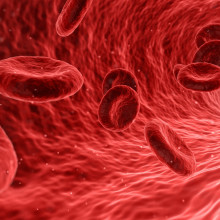
47:01 - Is there a window for finding drugs?
Is there a window for finding drugs?
Forensic toxicologist Lorna Nisbet gives us a glimpse as to how fast she has to work...
Lorna - Well, that depends on how the body breaks it down. So it's called something called the half life, and that's just basically the time it takes for half of the drug to get out of your body. And that's dependent on a whole lot of different things and lots of different biological and physiological models. But some are obviously extremely quick to get out of your system, like GHB, and others are really, really long lasting. So arsenic for example, you can exhume people and you can still find that in their body. It also depends on what you're actually testing people for. Things like your bloodstream: a lot of your drugs will come out of that relatively quickly. But your hair is constantly growing and as your blood is circulating around, as your hair grows, it incorporates some of that drug into your hair. So theoretically you should be able to get a timeline of somebody's drug abuse by taking hair. But it isn't a strand of hair, it's a full pencil just to get that mess away.
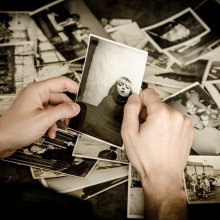
48:38 - How can you improve your memory?
How can you improve your memory?
Phil got an answer to his memory problems from neuroscientist Camilla Nord...
Camilla - So I want to know if he wants the bad news or the good news first.
Chris - I think he just wants you to hit him with the answer.
Camilla - Okay,okay, alright. So first I'm going to say I think bad news, which is that all those kinds of brain training apps and games are not proven to improve your memory on anything beyond that specific game. You can get really good at whatever they're training you on, but it doesn't actually generalise to other things, which is a bit of a downer. And similarly there is kind of a big community who are quite keen for using sort of brain hacking techniques like brain stimulation to improve their memory. And that can work in a sort of short term scenario. But similarly it tends not to generalise. And even if it did, it wouldn't kind of last to the extent that you'd hope to improve your memory. But there are a couple things that do seem to work. Two are obvious and one is cool. So obvious: sleep is a massive way to improve your memory. I've seen some really convincing work that even if you just take a quick rest, not necessarily falling asleep, just sort of closing your eyes, mindfulness type thing after trying to learn stuff, that makes you way, way, way better at remembering, which is kind of cool. And also exercise tends to make short term memory and other types of memory a bit better. But the surprising one is caffeine - not caffeine taken before you start trying to learn something as many people like to do - but actually caffeine taken right after. This is a paper from a couple of years ago in Nature Neuroscience that showed that if you give a caffeine pill right after trying to memorise something, it makes people better at remembering it.
Chris - But will paradoxically then stop you going to sleep, which might offset the effect of that wouldn't it?
Camilla - Hahaha, yeah, you'd have to balance the two!
Chris - Get the timing right. But you're dead right about the sleep because time and again studies have shown that if you give people a sequence of things to learn and then either sleep deprive them or encourage them to head off and have a good night's sleep, the recall and the performance, and not just the immediate recall and performance, but the long-term retention of the memory seems to be much better when people have had a chance to sleep on it.
Camilla - Yeah, and that's quite different from something like actually, something I didn't mention, like smart drugs where you can improve your performance on attention or how quickly you're working, but it doesn't at the moment seem to have those kinds of long-term improvements that people often want from a memory enhancer.
Chris - And one wonders whether, 'cause you mentioned exercise, whether that's just because when you take physical exercise you tend to sleep better afterwards. So it's whether the sleep is what is actually helping to consolidate the memory, or whether the thing that that emerged in the early days of studying these new cells that are born in the brain, which are born in the area of the hippocampus, which is involved in forming memories of course, and exercise as well as sex and antidepressants turned out to be a potent stimulus to make more of those cells. So one wonders which of these effects or all of the effects are at play?
Camilla - Yes, a kind of additional possibility is that the exercise-dependent effects on mood, which are really quite substantial, could themselves improve memory because having low mood tends to come with sort of worse short term memory.
Chris - So there you go, Matt now you know how you can, you can not only map out your solar system, you can remember the names of all the stars and planets as well.
Matt - That would be very useful.
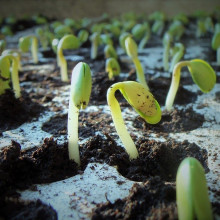
Does soy contain oestrogen?
Andrea put this soy suggestion to physiologist Sam Virtue...
Sam - As far as I can tell, no it doesn't. But soy contains some chemicals that mimic the body's own oestrogens called phytoestrogens. And the history of these is quite good. They were first observed in 1926, but we didn't actually know they could do anything until some farmers in the 1940s and 50s noticed that pastures of their sheep were not getting pregnant. And if you're a lamb farmer, that's something you want them to do. And they discovered that the red clover the sheep was eating was so rich in these phytoestrogens, they had effectively put their entire flock on the pill.
Chris - Are they effectively then molecules that look like oestrogen and work like oestrogen, but they're not oestrogen?
Sam - Exactly. And actually it gets a little complicated, because the oestrogens may have some potency on the oestrogen receptor, and the phytoestrogens, but it may not be as strong as our body's own. And so this means they can act to both promote oestrogen signalling in some people, or suppress it in others.
Chris - And so what would be the impact on things like diseases? Because we're worried about the role of hormones in some diseases like breast cancer.
Sam - Absolutely. And so this is why I mentioned the fact that they can be both promoting insulin signalling and blocking insulin signalling. So the evidence seems to be, from the majority of studies into soy itself, that it does not promote cancer and may even actually be protective of cancer in some individuals, but it's not certain.
Camilla - Does that mean that women trying to get pregnant shouldn't eat soy? Or were the sheep a different kind of experience?
Sam - I think that based on the stuff I read, you would need to eat a very, very large amount of soy for it to be an effective contraceptive.
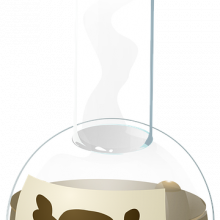
What are the most common poisons?
Lorna Nisbet answers this tricky toxicology question...
Lorna - When people are trying to, effectively, bump each other off, they either tend to be quite planned out or they generally are just things that are heat of the moment so you don't get a huge amount of poisonings anymore. The instrumentation that we use is now so sensitive that it's detecting way lower concentrations than ever before. So poisoning as a ruse and a way of killing somebody is really quite unfavourable. And the last time that we've really seen somebody doing that would probably be kind of like the Steven Port case where he was using GHB to kill people that he was meeting in Grindr. And that's only because that substance is endogenous in the body so we don't know how long, you know, like how much he had in it to begin with. And so it's not that common anymore.
Chris - Can I ask you a question which is sort of related. Because we've had a lot of issues with people doping in athletics, and that also is putting foreign molecules into the body, which people with instruments, like the ones you're referring to can detect. When people give themselves a big blood transfusion with blood that they banked from say two months ago, so they took some blood out of themselves, froze it down, and then they thaw it out before big race and reinfuse it could you detect that?
Lorna - So yeah, they can detect that, but that's got to get done by a specialist and toxicologist, which is not something that I am capable of doing.
Chris - How do you tell someone's got their own blood?
Lorna - Because they will be looking at, um, the different biomarkers within it, they'll be looking at the different oxygen consumption and various different other telltale signs within it. But that's done by kind of the WADA labs, so Kings College London, for example, and they have to be specialised for that work.
Sam - So I work in the field of obesity and diabetes and I've read insulin being used as a murder weapon in several detective novels. Have you ever come across that and would it still work with modern day insulin preparations?
Lorna - Yes, you could. Nicotine patches is another one. A lot of medication is getting misused and mishandled and so anything can actually kill you. It's just about the dose. So, and we've known that since about the 1600s when it was Paracelsus who said the dose makes the poison. So yeah.
Chris - But I think the, the point that you're referring to Sam is that some of these insulin preparations that we give patients are a little bit different than just the stuff that comes out of your pancreas. So can you tell the difference?
Lorna - Well, you would be able to look at the concentration of insulin within somebody anyway. It's not going to be a small amount of insulin that you're going to have to give somebody. It's not the same as doing like a diabetic injection. So it's about the concentrations. And that's why I love what I do so much because you're working in the grey and you have to put all these different parts together.










Comments
Add a comment